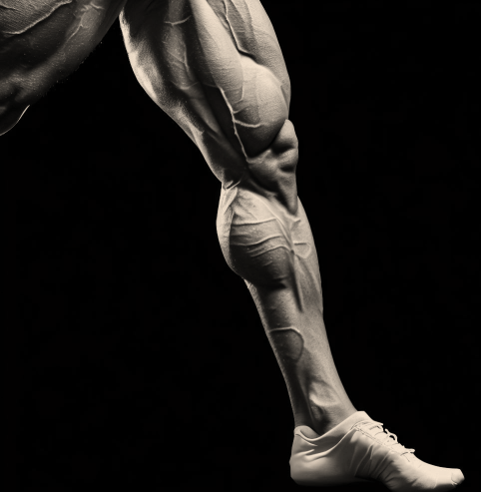Many of us are aware of the calf muscles and their significance in our daily movements. However, few are acquainted with the muscle that sits right opposite the calf on the front of the leg, the tibialis anterior. It may not be as prominent as the gastrocnemius or the hamstrings, but its role in our mobility is just as crucial.
Getting to Know the Tibialis Anterior
The tibialis anterior is a long muscle that runs down the outside of the shin, starting from just below the knee and extending to the ankle. It plays a significant role in dorsiflexion – the action of pulling the toes towards the shin – and inverting the foot.
Functions and Daily Movements
Walking and Foot Placement
Every time you take a step, your tibialis anterior gets to work. It controls the manner in which your foot touches the ground, ensuring a smooth heel-to-toe transition.
Running and Deceleration
For those who love to jog or sprint, the tibialis anterior aids in slowing down. When you’re about to stop, this muscle becomes particularly active, controlling the deceleration process.
Tibialis Anterior and Athletic Activities
Hiking and Uphill Walking
Anyone who has hiked or walked uphill knows the strain it places on the front of the legs. The tibialis anterior is central to this activity, working hard to lift the foot with each step upward.
Jumping and Landing
While the explosive power for a jump comes from muscles like the calves and quads, the tibialis anterior assists in stabilizing the foot when landing, preventing injuries.
Importance in Posture and Balance
Stability on Uneven Ground
When walking on an uneven surface or wearing high heels, the tibialis anterior helps maintain balance by adjusting foot positioning.
Aiding in Correct Posture
For those conscious of their posture, the tibialis anterior, in coordination with other leg muscles, ensures an even weight distribution from the feet upwards.
Taking Care of the Tibialis Anterior
With its significance in many of our daily activities, it’s essential to give this muscle the attention it deserves.
Stretching and Flexibility
Regularly stretching the tibialis anterior can prevent tightness. Simple stretches, like sitting with extended legs and flexing the toes, can be effective.
Strength Training
Exercises like resisted dorsiflexion with a band or manually pressing the toes against resistance can help strengthen this muscle.
Rest and Recovery
If you’re feeling soreness in the front part of your leg, especially after intense physical activity, it’s a good idea to allow some time for recovery. This can be complemented with ice packs or massages.
In conclusion, the tibialis anterior, though not as talked about as other muscles, is integral to our movement and stability. Its role in walking, running, jumping, and maintaining balance underscores its importance. So, the next time you’re stretching or working out, spare a thought – and some care – for this unsung hero of the front leg.
For a deeper understanding of the intricacies of leg muscles and their functions, explore our comprehensive articles in the anatomy category.
